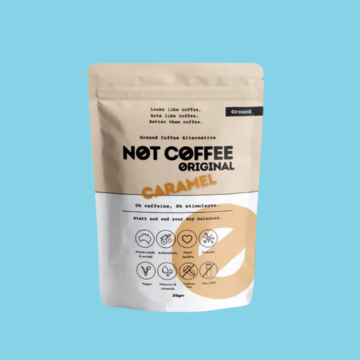The Right Balance
Maintaining the correct pH balance in your body plays a key role in your health.
Your body functions best in a slightly alkaline state. An overly acidic body can lead to poor body function and sub-optimal health. The correct pH balance, however, supports the body to perform at the best of its biochemical ability, resulting in vitality, energy and mental clarity. Acidity and alkalinity are measured according to the pH (potential of hydrogen) scale. On this scale of 0 to 14, 0 is the most acidic and 14 is the most alkaline. The ideal pH range for the human body falls in between 7.0 to 7.4.
However, the pH range in the body is in a constant state of flux. Every metabolic function, from breathing and digestion to energy production and stress, will create acidic by-products and force the body towards acidosis. Acidosis is a condition in which body chemistry becomes unbalanced and overly acidic. Regularly testing your pH is the only way of knowing how acidic your body is.
Symptoms associated with low to severe acidosis:
- Lack of energy/fatigue, weight gain
- Muscle aches and pains
- Frequent colds and flu
- Gout
- Arthritis
- Excess mucus production
- Anxiety
- Irritability
- Poor skin health
- Indigestion.
Also of concern is that any elevation of acidity in the body will increase inflammation and trigger soft tissue degeneration and bone loss.
What you can do
A basic rule of thumb to achieve the right pH balance in your body is to eat 80 per cent alkaline-forming foods. The other 20 per cent should be acid-forming foods (see “Are you getting enough?”). In addition, drink 2-3 litres of water daily. Unfortunately, the modern Western diet – with its non-raw and processed foods, over-reliance on animal and refined grain products, and too much sugar, salt, caffeine, artificial ingredients and alcohol – is a recipe for over-acidity. The good news is that it is easy to change. If you don’t feel well, you can use a quality pH test kit (see “What’s your number?”). If the test kit indicates that your body is too acidic, you can eat more alkaline-forming foods and omit acid-forming foods from your diet. Do this until another pH test shows you have returned to normal levels.
Eat more raw alkalising foods
Raw foods, especially raw leafy greens, can maintain the correct acid/alkaline balance in the body. They are also richer in nutrients and easily assimilated by the body. If your diet is inadequate, a booster shot of Vital Greens powder in your morning smoothie or juice can help speed up the process.
Avoid the acid-makers
Do not overcook vegetables; limit all processed foods and animal protein. Avoid acidic drinks and snacks.
What’s your number?
To discover your body’s pH, buy a NatraChoice, Are you 7+ pH test kit at Go Vita. These recyclable pH test strips are easy to use and can be used to test urine or saliva pH. They can give consistent and accurate results in under two seconds. Note: The use of pH test strips is not intended to replace the advice of your health practitioner.
Are you getting enough?
All fresh vegetables, especially raw leafy green vegetables, help balance the acid/alkaline levels within the body. Raw is best, and cooking foods reduces its effectiveness to some degree. Eat fruits in moderation. Although it might seem that citrus fruits would be acidifying, lemons have an alkalising effect in the body. Try it in a glass of water to start your day. Remember to test your pH first, for a few days, then see which foods work best for you to lower your acidity while continuing to check each day. Speak to your healthcare practitioner to discuss the best foods for you.
28 raw and unprocessed foods to help reduce acidity and inflammation:
- Almonds
- Apples
- Avocadoes
- Bananas
- Brazil nuts
- Broccoli
- Capsicum
- Celery
- Coconut – virgin, cold-pressed/unprocessed
- Cucumber
- Dates
- Grapefruit
- Horseradish
- Kale
- Lettuce
- Lemons
- Lima beans
- Limes
- Molasses
- Mushrooms
- Onions
- Pomegranate
- Potatoes
- Soy products – fermented
- Spinach
- Spirulina
- Sprouts
- Watercress

